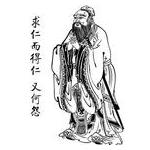
论语境对话篇的影响
¥ 15.68 5.2折 ¥ 30 全新
仅1件
山东泰安
认证卖家担保交易快速发货售后保障
作者王全智
出版社世界图书出版公司
出版时间2014-01
版次1
装帧平装
货号R2库 1-10
上书时间2025-01-11
- 在售商品 暂无
- 平均发货时间 26小时
- 好评率 暂无
- 最新上架
商品详情
- 品相描述:全新
图书标准信息
- 作者 王全智
- 出版社 世界图书出版公司
- 出版时间 2014-01
- 版次 1
- ISBN 9787510069918
- 定价 30.00元
- 装帧 平装
- 开本 32开
- 纸张 胶版纸
- 页数 216页
- 字数 180千字
- 【内容简介】
- 本书旨在探讨语境中到底有哪些因素对语篇施加影响,并通过何种方式对语篇施加影响。研究以韩礼德的系统功能语言学为理论基础,从动态的角度探讨语境对语篇的影响,具体涉及语境中的三大变量——语场、基调和语式各自对语篇产生的影响,以及这三个变量之间的互动又是如何对语篇的构建和进展施加影响的。
- 【目录】
-
1.1.1 Motivation of this study
1.1.1.1 Sterility of structuralist studies of language
1 . 1 . I .2 Limitations of Z. S. Harris 's Discourse Analysis
1.1.2 Insufficiency of Halliday's exploration of context and text
1.1.3 Significance of this current study
1.2Research Methodology
1 .3 Collection and selection of corpora
1 .3. 1 Data collection and selection
1.3.2 Justification for the adoption of spoken prose as corpora
1.3.3 Transcription of real-life spoken data
1.4 Theoretical framework of this study
1 .5 Structure of this research
Chapter 2 Literature Review on Context of and Text
2. I Introductory remarks 1
2.2.1 Context defined by different linguists
2.2.1. I Malinowski's definition of context
2.2.1.2 J. R. Firth's definition of context
2.2.1.3 Halliday and Hasan's notion of context
2.2.1.4 Roman Jacobson's definition of context
2.2.1.5 D. Hymes 's definition of context
2.2.1.6 Elinor Ochs's definition of context
2.2.1.7 CHEN Wangdao's definition of context
2.2.2 Cognitive context 3
2.2.2.1 Philosophers' statement of obj ective context andcognitive context
2.2.2.2 Context in cognitive linguistics
2.2.2.3 Problems with the theory of cognitive context
2.3 Text
2.3. 1 Text, discourse, conversation
2.3.1.1 van Dijk's definition of text and discourse
2.3.1.2 Halliday and Hasan's definition of text
2.3.1.3 Brown and Yule's definition of discourse and text
2.3.1.4 Beaugrande and Dressler's definition of text
2.3.1.5 Coulthard's definition of discourse
2.3.1.6 Fowler's notion of text and discourse
2.4 Text and Context in this research
2.4.1 Text in this research
2.4.1.1 Informativity
2.4. 1 .2 Semantic compatibility
2.4.1.3 Associability
2.4.1.4 Cognitivity
2.4.1.5 Length felicity
2.4.2 Context in this research
Chapter 3 Impact of Field upon Text
3.1 Introductory remarks
3.2 Field and its components
3.2.1 Suzanne Eggins's description of field
3.2.2 Leckie-Tarry's description of field
3.2.2.1 Arena/activities 5
3.2.2.2 Participants
3.2.2.3 Semantic domain.
3.2.3 A brief summary
3.3 The impact of field upon text
3.3.1 The impact of subj ect matter upon text
3.3.2 The impact ofparticipants upon text
3.3.3 The impact of setting upon text
3.3.3.1 Conversation inside the classroom
3.3.3.2 Conversation outside the classroom
3.4 Summary
Chapter 4 Impact of Tenor upon Text
4. I Introductory remarks
4.2 Different definitions of tenor
4.2.1 Gregory's definition of tenor
4.2.1.1 Personal tenor
4.2.1.2 Functional tenor
4.2.2 Poynton's definition of tenor
4.2.2.1 Power
4.2.2.2 Contact
4.2.2.3 Affective involvement
4.2.3 Martin's definition of tenor
4.2.3.1 Status
4.2.3.2 Contact
4.2.3.3 Affect
4.2.4 Leckie-Tarry's definition of tenor
4.2.4.1 Formality
4.2.4.2 Role
4.2.4.3Focus
4.3 Impact of tenor upon text
4.3.1 Impact of power upon text
4.3.2 Impact of contact upon text 1
4.3.3 Impact of affective involvement upon text 1 1
Chapter 5 Impact of Mode upon Text
5. 1 Introductory remarks 1 1
5.2 Definitions of mode
5.2. 1 Halliday's definition of mode
5.2.2 Leckie-Tarry's definition of mode 11
5.2.2.3 Contextualization
5.2.3 Martin's definition of mode
5.2.3.1 Spatial/interpersonal distance
5.2.3.2 Experiential distance
5.2.4 Summary of the quoted definitions
5.2.5 The definition of mode to be taken in this research
5.3 Impact of mode upon text
5.3.1 Differences between spoken mode and written mode
5.3.1.1 Referential choices between spoken mode and written
5.3.1.2 Nominalization: a typical feature of written mode
5 .3 .2 Written-to-be-spoken mode and its actualization 1
5.3.3 Intemet relay chat and face-to-face conversation
5.3.3.1 Sequential organization in QS-CMC: The misinterpretation of adj acency
5.3.3.2 Phantom responsiveness and phantom adj acency pairs
5.3.3.3 Turn-taking in QS-CMC: The problem of virtual
5.3.3.4 The misinterpretation of silence
5.3.3.5 Miscommunication in QS-CMC
Chapter 6 Interaction between Contextual Factors and lts Impact
6. 1 Introductory remarks
6.2 Contextual factors revisited
6.3 Impact of field upon mode
6.4 Impact of mode upon tenor 1
6.5 Impact of tenor upon field
6.6 Impact of tenor on mode
6.7 Impact of field upon tenor
7.2 Contributions of the current research 1
7.3 Insu伍ciencies of the current research
7.4 Suggestions for future research
7.5 Pedagogical implications of this research
点击展开
点击收起
相关推荐
— 没有更多了 —




















以下为对购买帮助不大的评价